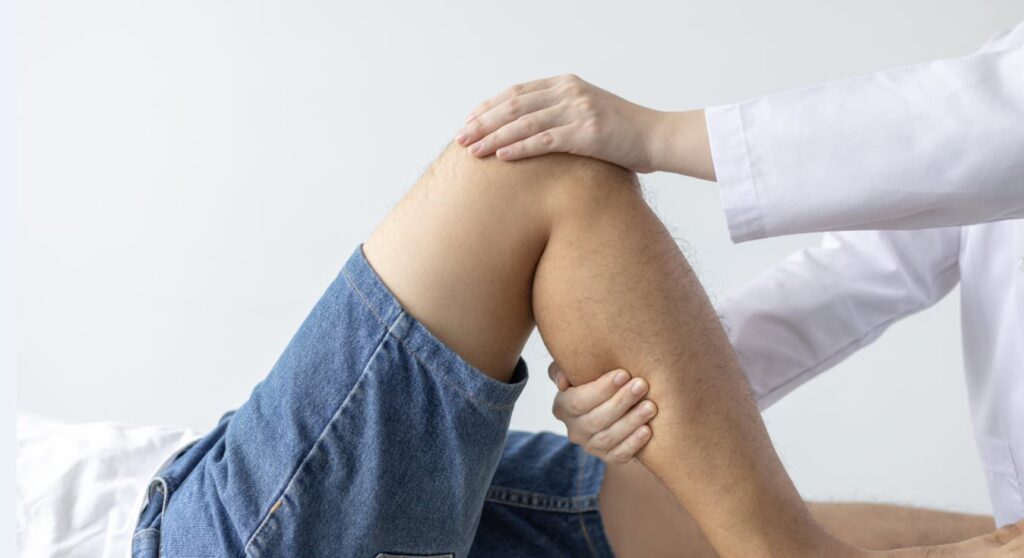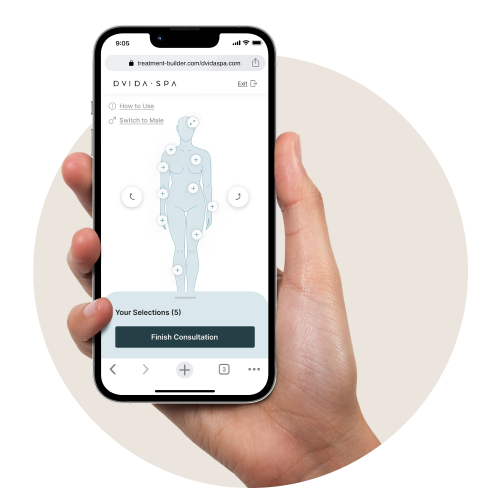
The human body contains trillions and trillions of cells. Each cell has a specific role in the body. Red blood cells, for example, transport oxygen throughout the body. Muscle cells repair and grow muscle tissue. Epithelial cell creates the skin covering.
These “unspecialized cells” are of regenerative type because they serve no specific function, and these regenerative stem cells can grow and become different types of cells. They are made up of cells that develop cartilage, meniscus, ligaments, tendons, and muscles. As a non-surgical treatment for knee joint pain, regenerative stem cell therapy offers a self-renewing solution that produces more regenerative stem cells. They are also able to prevent other cells from dying due to a lack of oxygen and secrete anti-inflammatory proteins.
Regenerative cells can be injected into an arthritic knee and will attach themselves to areas of damaged tissue. They are capable of scanning the microenvironment in the knee to understand what cells need to be cultured and what molecules will facilitate tissue repair. The treated regenerative cells begin developing new cells and function as the body’s drugstore, producing and secreting a blend of growth factors and protein to accelerate the healing of damaged knee cartilage and tendons.
In a Hurry? Dial 984-253-3377 Now!
Knee Pain Therapy with Platelet Rich Plasma
Plasma is a transparent part of the blood that contains all the other parts of the blood, such as red blood cells, white blood cells, and platelets. Platelets in your blood circulate throughout the body, so you don’t bleed if you get injured, you break a bone, or you get injured inside, and you bleed. Platelets have clotting factors but also release proteins and growth factors to be utilized in repairing arthritis knees. The PRP is a platelet concentration that releases a high level of growth factors and protein to stimulate a strong healing response.
A Knee Injection to Relieve Pain
You might be prescribed oral medications by your physician to alleviate arthritis or joint pain. Among them, some could be Aspirin, naproxen, and ibuprofen tablets that can heal pain and swelling.
Your orthopedic doctor may prescribe an injection if pain is not relieved by oral medication. Injections are an efficient and speedy means of pain relief. Injections of cortisone or steroid joint injections and other medications have a disadvantage since repeated injections in the long term may lead to joint degradation.
Braces and Orthotics of the Knee
Some knee pain disorders can be treated using a simple foot orthotic or knee bracing. Orthotics for the foot, or braces or insoles, are adjustable devices that correct and regulate foot imbalances. Foot supports through orthotics can realign the bones of the foot and lift the arch to disallow abnormal motion. Foot disorders, in some cases, may lead to ankle, hip, knee, and back disorders.
You may need to wear an orthotic device if you’re a runner with knee pain. The device could alleviate knee pain by changing you foot.
Faulty foot mechanics could result in faulty running and other body movements that cause damage to the knee. If you are obese or have arthritis, the foot orthotic will help. It will realign your foot to reduce stress on your knee and provide you with greater mobility and comfort. Orthotics are often used as a nonsurgical treatment for knee joint pain, offering relief without the need for invasive procedures. They exist in soft, semi-rigid, and rigid materials—rigid for complete control and support, and semi-rigid for both support and shock absorption.
You may use knee braces to treat an injury or prevent your knees from further injury. Always consult your physician before using these devices. The brace may damage your knee if used improperly. Using it for long periods will also keep the muscles around your knee from strengthening.

In a Hurry? Dial 984-253-3377 Now!
Hyaluronic Acid to Treat a Degenerative Joint in the Knee
Osteoarthritis is treated with injections of hyaluronic acid. It is naturally equivalent to the body’s natural joint synovial fluid. It is a joint lubricant and shock absorber, and allows joints to move within normal parameters.
Throughout the course of treatment, the orthopedic doctor will inject hyaluronic acid into your knee. The treatment is administered every three to five weeks. This procedure has only been FDA-approved for osteoarthritis in the knee. However, most are also treating other joint arthritic conditions with it because it is a lubricant.
The hyaluronic acid injections are not suitable for everyone. Older or more experienced arthritis patients will not tolerate the shots as well. Most people use it as an alternative just one step below full knee surgery.
Knee Therapists and Specially Prescribed Exercises on a Patient-by-Patient Basis
Working out is torture, just to consider when a person has knee problems. There are certain exercises to correct most knee problems. They contract loose muscles and also render them flexible.
A knee doctor is also able to rehabilitate a partially torn tendon without surgery. A knee therapist will also be able to personalize exercises to replicate the activity that you wish to return to, e.g., golf, tennis, and running are all excellent means of conditioning the knee joint. The same situation is true for rehabilitating a knee after having surgery to gain the normal range of motion.
Some of the most effective home remedies to use when experiencing knee pain are:
Anti-Inflammatories
NSAIDs like ibuprofen suppress swelling and inflammation. Ibuprofen is a case in point. They cover up a bruised knee and cause internal damage. Chronic and long-term use over time does its damage, in the form of damaging liver functions and ulcers.
The drug abuse will cause you to keep abusing your knee, and this will stress any injury. In the event of knee pain that persists for more than a few days, you should find an orthopedic surgeon to determine the cause. Some new nonsurgical treatment for knee joint pain are now available to reduce symptoms of pain. They are not drug action. based on masking the symptom, but it could be hazardous with side effects.
You Can Try the Following At-Home Remedies for Knee Pain
Weight Loss Alleviates Knee Pain Symptoms
The US Government reports that 56% of Americans are overweight. It isn’t healthy for our knees. Science shows that the size and strength of our knees reflect the amount of weight our bodies are built to handle. So if you’re a smaller woman, your knees don’t support as much as those of a six-foot-tall man. The body will adapt to different weights and become accustomed to them, but there is a line after which it will not hold the increased weight.
Body Mass Index (BMI) equals your weight in kilograms multiplied by height in centimeters. Your answer is your BMI. BMIs ranging from 18.5 to 25, inclusive, are normal. A BMI over 25 is obese, and a BMI over 30 is overweight.

Bottom Line!
Find cutting-edge, nonsurgical treatment for knee joint pain, such as regenerative cell therapy, PRP therapy, and individualized knee therapy at Dvida Med Spa. Whatever you are struggling with—arthritis, injury, or chronic joint pain—our custom solutions guarantee you return to motion smoothly, surgery-free.
Dvida Medical Spa Offers Platelet Rich Plasma Therapy In Cary, Raleigh & Chicago! Make an appointment now and begin the journey toward pain-free living.

